DURATION
Three Months
Problem
The problem was to design a user-centered digital platform that educates Californians about preserving water for a sustainable future. The platform should integrate UX design principles to ensure the platform is engaging, informative, and easy to navigate, ultimately driving positive behavior change.
ROLE
Sole Researcher, Designer, Strategist
Solution
I designed and prototyped a website/mobile that educates Californians living in urban environments about the benefits of hydroponics for their home, local communities, and agriculture businesses.
Think Hydro introduces six types of common hydroponic systems that would best work for city dwellers. The website also lays out important information for getting started and how much more sustainable hydroponic farming is than standard agricultural crop farming.
Think Hydro provides an overview of the fundamentals of indoor hydroponic systems, an overview of systems and their benefits, and a page to get a free guide on starting an indoor system.
Programs
Adobe Illustrator, Indesign, After Effects, Premiere Pro, Acrobat, Google Docs, Google Drive, Canva
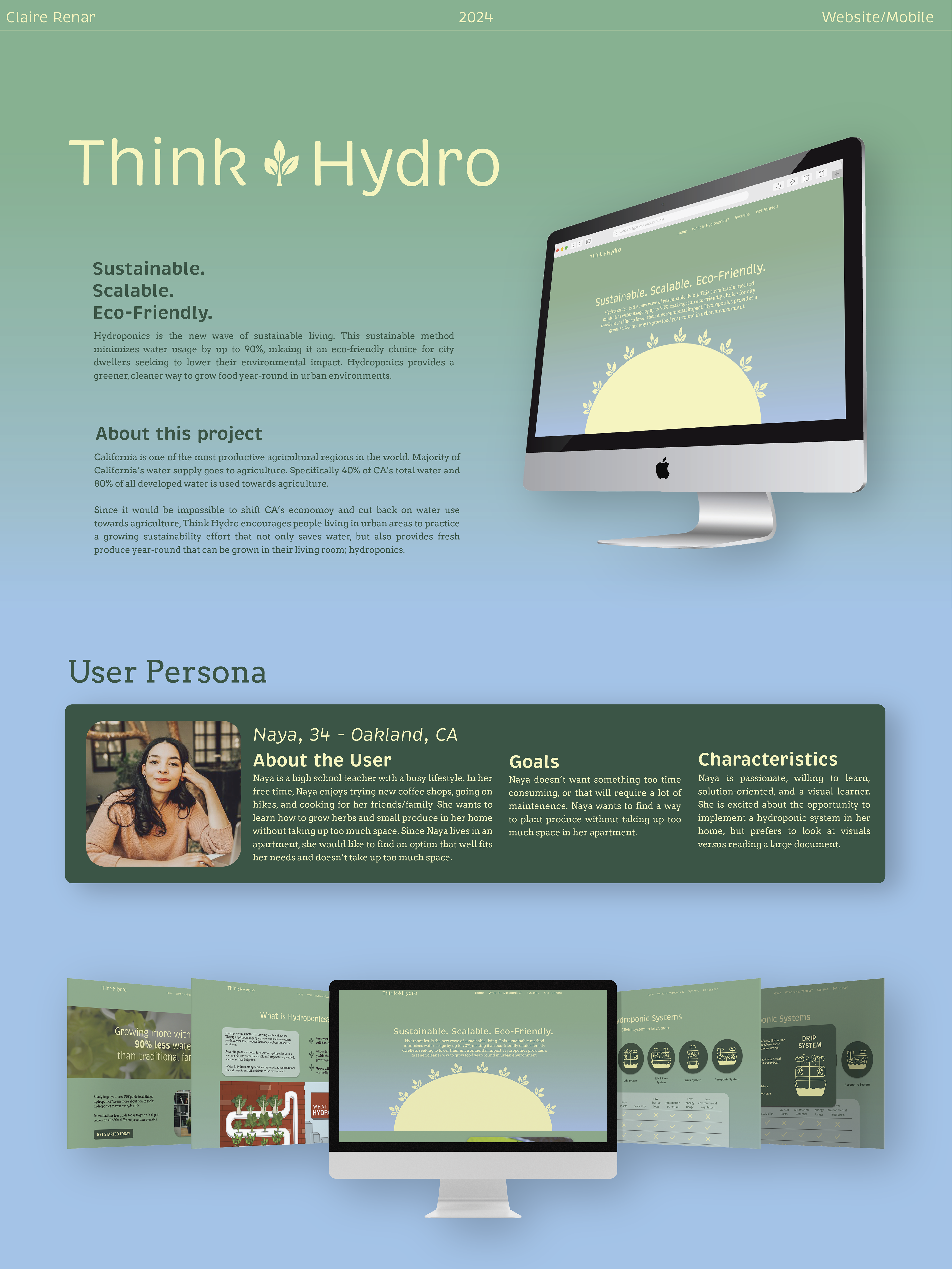
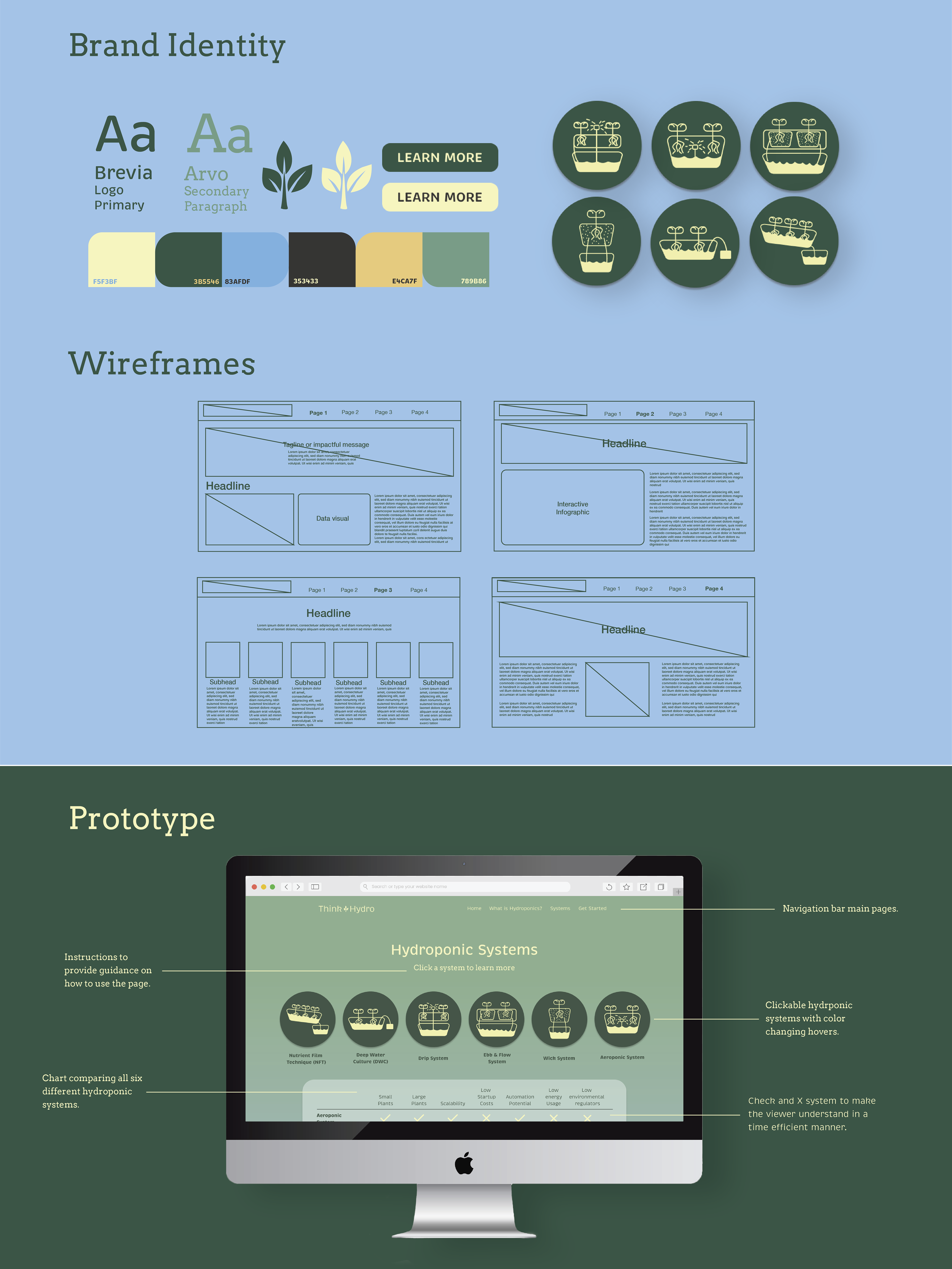
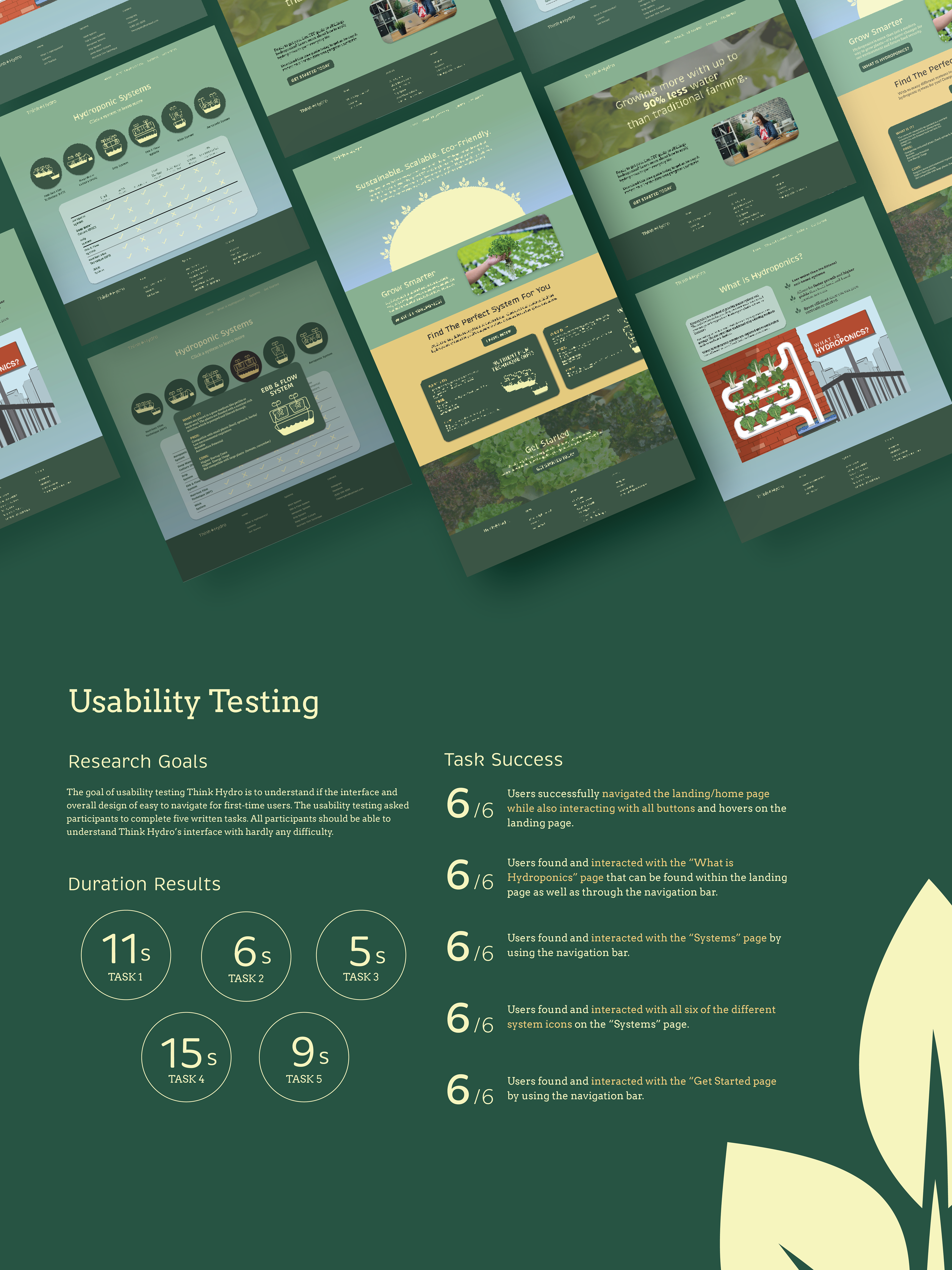
RESEARCH
California is one of the most productive agricultural regions in the world and is the major producer of many nuts, fruits, and vegetables. This also means that the majority of California’s water supply goes towards agriculture. Approx. 40% of CA’s total water and 80% of all developed water is used in agriculture.
Due to California's agricultural impact, it could pose as challenging to reform the state's agriculture production and see a result in less water usage across California.
Since it would be nearly impossible to shift California’s economy and stop agriculture in California altogether, I narrowed the issue down and focused on sustainability practices that push toward preserving California's water supply with agribusinesses and local communities.
Challenges
One of the biggest roadblocks I ran into while researching hydroponic systems and best practices was how many people are currently implementing hydroponic systems. Over the last ten years, hydroponic systems have been vastly growing throughout the state, becoming a more common practice over traditional gardening methods due to their flexibility in design, and water conservation.
Often, many hydroponics systems can be costly to start. For a standard beginner kit, they can range in price from $150 - $800 USD. I tried to find alternative options that would cater to those looking for a smaller build. While I found a few options that aren't high in cost, the sad reality is that hydroponics are not mainstream enough to make all six systems listed as cost-friendly.
Learnings
Throughout this project, I learned the importance of balancing environmental advocacy with economic realities. While California’s agricultural industry heavily relies on water resources, it also plays an essential role in feeding populations across the globe. This made it clear that proposing solutions meant to replace traditional agriculture wasn’t realistic. Instead, I focused on sustainable, accessible alternatives—like hydroponic systems—that could complement current practices and empower individuals and communities to be part of the solution, especially in urban areas.
Designing Think Hydro taught me that accessibility goes beyond just clear messaging—it also means providing solutions that meet people where they are in terms of space, budget, and understanding. I had to navigate challenges such as the high startup costs of hydroponics and the gap in awareness about their long-term benefits. By prototyping a resource hub that breaks down the complexities of hydroponic farming, I was able to turn an overwhelming topic into something approachable and engaging, while advocating for small-scale change with scalable potential.
USER PERSONAS
The targeted audience of Think Hydro is 30-55-year-old individuals living in major cities or urban environments. The ideal user does not have access to a large garden or space for a conventional hydroponic system. I designed three initial user personas that reflect the targeted users of Think Hydro.
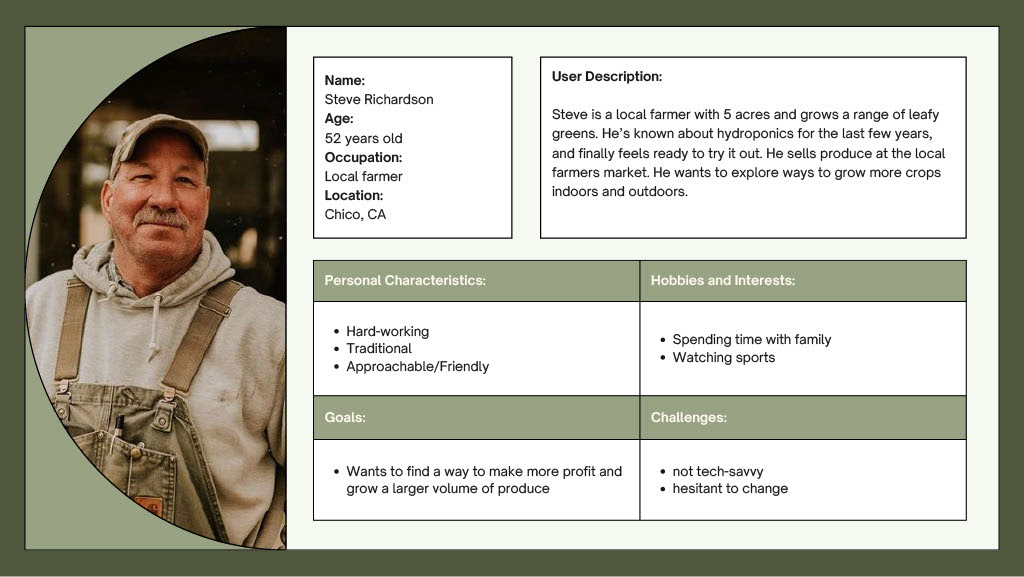

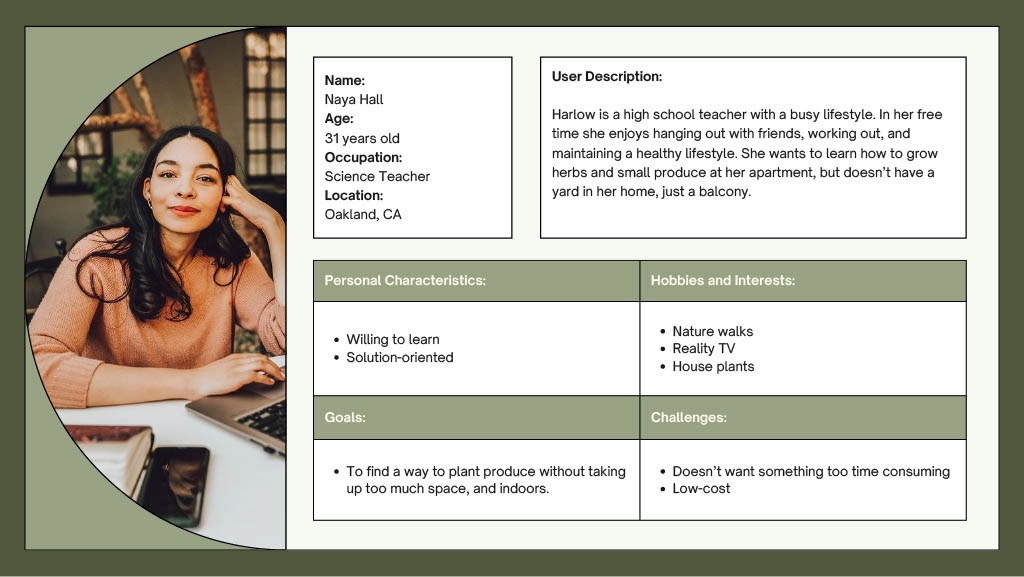
USER JOURNEY MAP
I narrowed my focus to one user persona. The persona, Naya, is an educator in Oakland, CA, who wants to learn how to grow herbs and small produce in her home without taking up too much space.
My finalized User Journey Map goes through a user's four stages: 1) Awareness/Discovery, 2) Consideration, 3) Decision/Purchase, and 4) Post Experience.
Interactive Infographic
After determining the problem and goal for Think Hydro, I designed an interactive infographic that teaches the basics of a common hydroponic system for urban environments.
There are four points that a user can click to learn more about:
- What hydroponics is
- How hydroponics is an eco-friendly alternative to standard crop farming methods
- The drip hydroponic system
- How hydroponic systems avoid wasting water
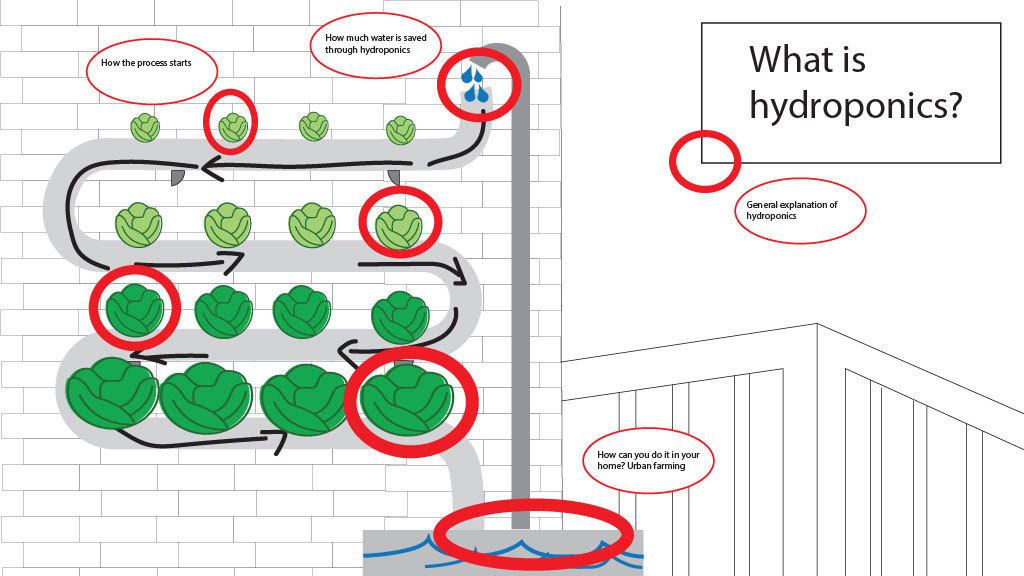
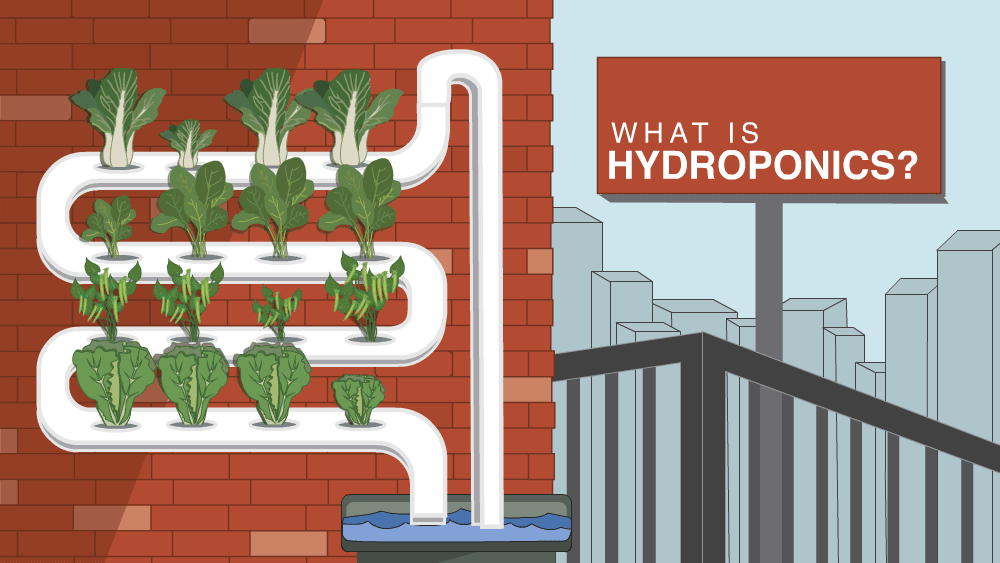

Promotional Video
After finalizing my prototyped website, infographic, user journey map, and UX/UI posters, I created a promotional video to highlight Think Hydro.
The Promotional Video runs you through the main navigation of the website while demonstrating how simple it is to get started with hydroponics.
Think Hydro was all about bridging the gap between sustainability and accessibility. By combining research, strategy, and design, I created a platform that makes learning about hydroponics approachable—especially for people living in cities with limited space. This project challenged me to think realistically about behavior change and the barriers people face when trying something new. In the end, Think Hydro became more than just a digital solution—it’s a starting point for rethinking how we can grow food and conserve water in everyday life.